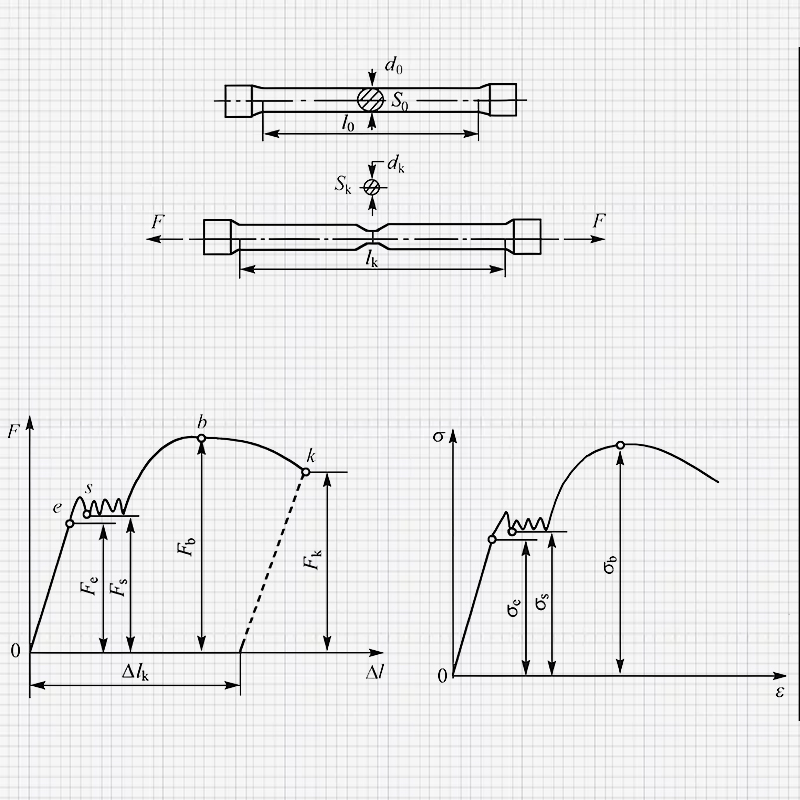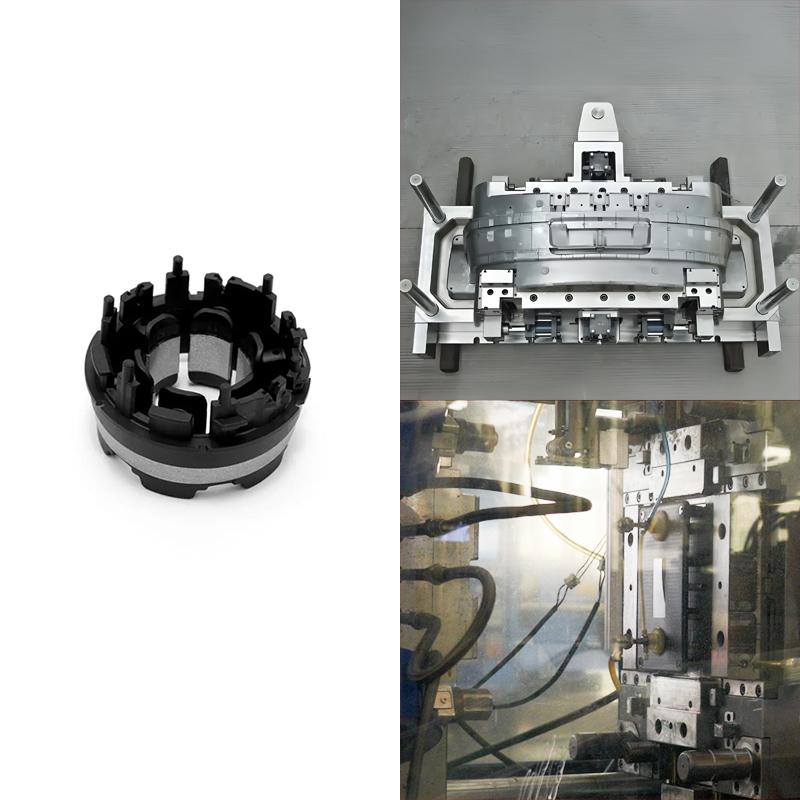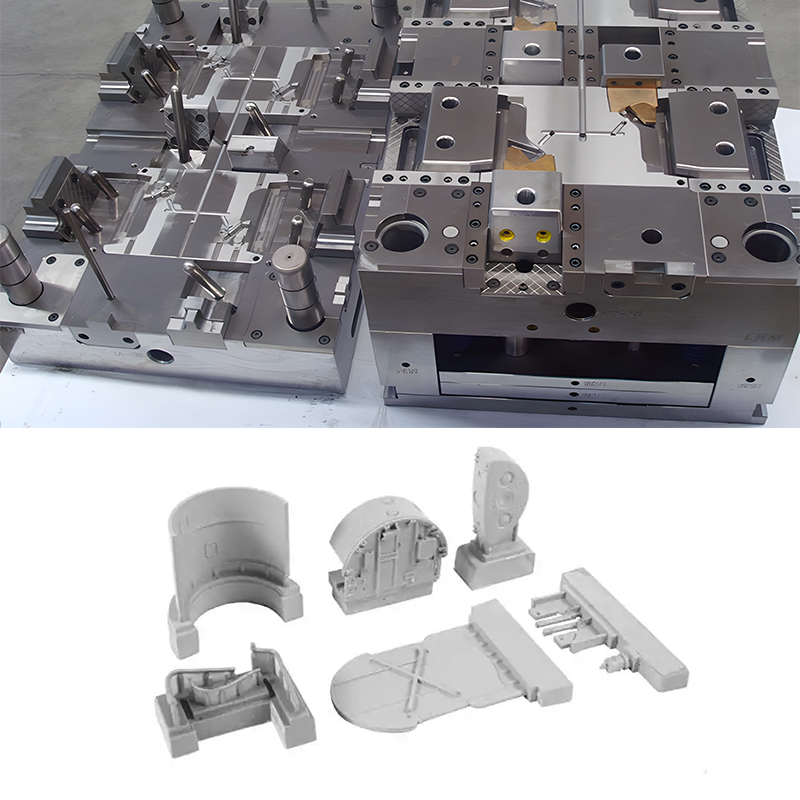The success of any product design lies in the careful selection of materials, guided by an understanding of their strength, stiffness, and hardness.
These properties are the pillars of material science, crucial for achieving the desired performance in engineering applications.
This guide offers an in-depth look at these fundamental pillars. It covers their essential properties, their impact on product design, measurement techniques, and practical applications in engineering.
Once you grasp these concepts, you can create high-quality products, meeting or even setting new bars in performance.
Understanding Strength in Product Design
Strength is a fundamental property that defines the stress threshold a material can undergo before permanent deformation or breakage. It is a critical consideration in engineering applications where the structural integrity and safety of a product are paramount.
That said, strength is not a single correct notion but comprises several forms applicable to various design considerations.
Types of Strength
Let’s break down the different types of strength considered for material designing:
Tensile Strength
Tensile strength indicates the highest level of stress a material can withstand before it fails when subjected to stretching or pulling forces. It has much importance in reference to components under tension, including rods, cables, and bolts.
It is the very reason high tensile strength materials serve very important purposes in some applications where pulling is the dominant force. This is in such a way that the material cannot fail under loads.
Compressive Strength
It is the resistance of a material to compressive forces without producing permanent deformation or failure. This property is among the most essential for construction materials like concrete and steel, which significantly form buildings and take on huge loads.
In such applications, including columns, bridges, and load-bearing walls, compressive strength holds structures in place against heavy loads.
Yield Strength
It is the value of stress at which a material deforms. At any value below it, the material will undergo elastic deformation and the original shape will be returned to the material on removal of applied stress.
As the process goes over the yield point, this involves permanent deformation of the material that can start to have implications on the quality of the component. As a note, one of the most vital design parameters for any design engineer should be yield strength.
This is because it represents the highest stress a material can tolerate without experiencing permanent deformation. This way, a product’s capability of keeping its shape and functionality under a load is guaranteed.
Fracture Strength
Fracture strength is the intensity of stress at which the material breaks apart. This is a key property of materials in mission-critical or life-critical applications, where the failure of material is not acceptable.
For example, in spacecraft, failure of a component could lead to catastrophe. Therefore, the materials should be selected to ensure they don’t fail under extreme conditions. This selection helps to make sure that the fracture strength of the materials is not reached.
The Stress-Strain Curve
The stress-strain curve visually illustrates the relationship between stress and strain for a specific material.
This helps understand the mechanical properties of a material under test, considering its strength, stiffness, and ductility.
- Elastic Region: This is the first part of a stress-strain curve for the material, linear in nature. Therefore, materials deformed within this region are known to return to their original shape when the stress is removed. In this regime, Young’s modulus characterizes the slope that captures the measure of the stiffness of the material.
- Yield Point: It marks the point of stress where a material begins to shift from elastic to plastic deformation. At this point, permanent deformation can be caused in a material upon removal of the load if it is working at a stress above this point.
- Ultimate Tensile Strength: This is a measure of the maximum stress that a material can support before necking and eventually fracturing with increasing elongation. In simpler terms, the UTS point in the curve indicates a material’s capability to resist carrying the highest load applied if incurred in a tensile manner.
- Fracture Point: This is the point at which the material fractures. Being aware of the fracture point is very helpful in making a preliminary prediction of failure for applications with high consequences.
Engineers have to be fully conversant with the stress-strain curve, as this is one curve that gives them all the information regarding how their materials will behave under the varied forms of stress.
Here’s why: The curve will allow the engineers to tell whether a material will be used for its intended use or if the expected load will lead to failure.
Exploring Stiffness in Engineering Design
The other important property of a material is stiffness, which describes the ability of a material to resist change of shape on the application of any force.
Stiffness finds its very essence in applications where the maintenance of shape and structural integrity is under load.
The former describes the maximum load a material can withstand without deforming or breaking. Stiffness, on the other hand, measures how much a material deforms when a load is applied.
Relationship Between Stiffness and Elastic Modulus
Stiffness is defined via Young’s Modulus of the material, which characterizes its resistance to elastic deformation. A higher elastic modulus indicates a stiffer material, meaning it will deform less when subjected to a given force.
This relationship is crucial in engineering design because it allows engineers to predict how much a material will deform under specific loads.
For example, materials with high stiffness are chosen for designing buildings and bridges. This choice minimizes deflection and ensures that these structures remain stable under load.
On the contrary, materials of low stiffness, like rubber, find application in vibration dampers and shock absorbers to gain flexibility and energy absorption.
Types of Stiffness
Stiffness has the following types:
- Axial Stiffness: Axial stiffness is the ability of a material to resist deformation along its length under axial forces. This property becomes very essential in components whose length and shape do not change, but which are subjected to compressive or tensile loads like columns and struts.
- Torsional Stiffness: It is the stiffness of the twisting or angular deformation that is taking place. This property is also much needed among shaft-like elements. An example of this is gears and other rotating parts. These components require resistance against torsional forces to help maintain alignment and proper functioning of the materials.
- Bending Stiffness: It is the reluctance of the material to flexure or bend under a given load that may be said to be its bending stiffness. Very often, this can turn into the most important feature in any girders, beams, and other structural elements. These components must hold up their loads without excessive deflection. This bending stiffness will ensure that such structures can handle loads without sagging or failing.
- Shear Stiffness: It is the resistance of a material to shearing forces—that is, the sliding of layers against each other. This property is significantly important in joints, fasteners, and other components where the integrity of such parts is desired to resist shearing forces.
Hooke’s Law and Stiffness Calculation
Hooke’s Law explains that the force applied to a spring causes it to stretch or compress. The degree of stretch or compression increases in direct relation to the force applied. This law forms the basis for calculating stiffness and is usually represented by the formula;
Stiffness(k)= Force(F)/Displacement(Δx)
This law predicts responses to forces that are applied in engineering. By understanding this, you can design components resistant to deformation while maintaining the intended shape and functionality of the material.
For instance, one of the critical factors of machining is the stiffness of the cutting tool. This means the tool should be stiff enough not to be deformed during a cut to allow an accurate cut while maintaining the required tolerance.
Here, if a tool is not stiff, it will bend or deflect due to the cutting forces. This situation will bring inaccurate cuts and probably lead to tool breakage.
The Importance of Hardness in Material Selection
Hardness measures a material’s ability to resist localized surface deformation, such as indentation, scratching, or abrasion.
This property is of considerable importance in applications where resistance to surface indentation is necessary. It is especially crucial in situations where materials are subjected to wear and abrasion
Why Hardness Matters?
In simple terms, hardness can be directly related to a material’s resistance to wear. So, if two surfaces are making contact with one another during an application, the harder one will experience less wear.
For example, cutting tools must be very hard to maintain a sharp cutting edge and resist wear, which can extend life. For tools that are meant to cut through tough metals like carbide or diamond, the cutting edge should remain sharp to continue its effectiveness over time.
However, materials with low hardness tend to wear down and cause non-functionality and a rise in the cost of maintenance. Therefore, the knowledge and selection of materials used in such parts on the basis of their hardness is important in applications where wear resistance is essential.
Young’s Modulus: The Link Between Strength and Stiffness
As mentioned earlier, Young’s modulus is a material property that indicates the stiffness of a solid material. It defines the relation between stress and strain, which are both located within the elastic region on the stress-strain curve.
Importance in Engineering Design
Young’s modulus is important for indicating how much a substance will deform under a certain applied load.
Materials with a high Young’s modulus will remain stiff and less readily deformed. Such properties make them suitable for structural applications where the maintenance of shape is important.
For example, steel has a high Young’s Modulus, which is a measure of stiffness. Due to this property, it finds application in both construction and manufacturing, as it can support heavy loads with minimal deformation.
On the other hand, materials such as rubber with low Young’s Modulus find applications where flexibility and elastic deformation are called for, like shock absorbers and seals.
Elastic Modulus in Product Design
Elastic modulus, often referred to as the modulus of elasticity, is a key material property. It is a measure of the tendency of a material to undergo elastic deformation. The nonpermanent deformation of a material under an applied force.
Engineers use this property to predict the material behavior under different types of loads if required. This helps ensure that the respective components of the device being designed continue to serve their purpose effectively over the entire lifetime.
Summing Up!
Good product design relies greatly on the principles associated with strength, stiffness, and hardness. From these three properties, the material responses to variably applied stresses will be determined in belief to endow the product with durability, reliability, and safety.
By adequately applying the principles described in this article, the engineers at First Mold make informed decisions to ensure improved performance and a longer life span for every product we design and manufacture.




















